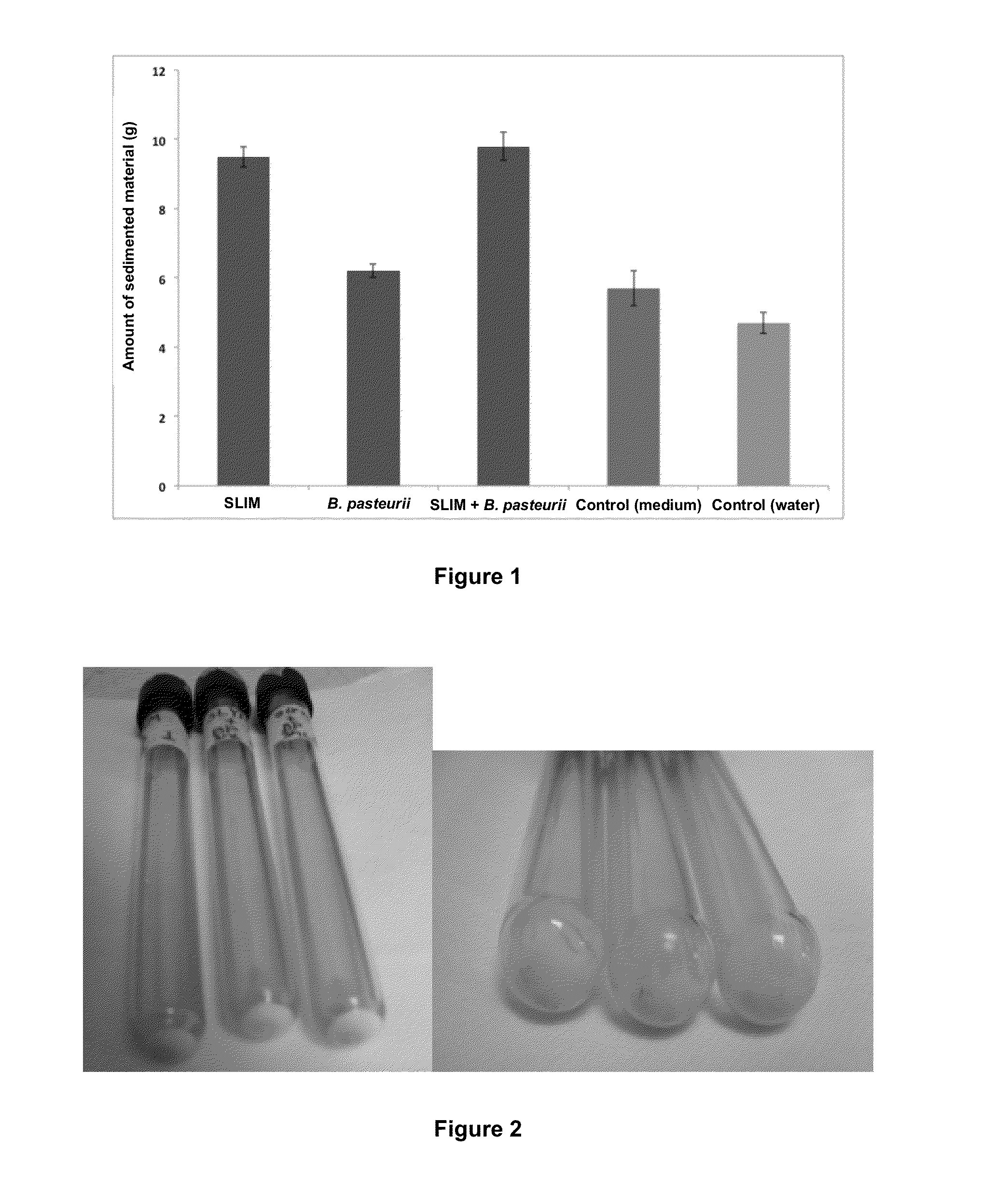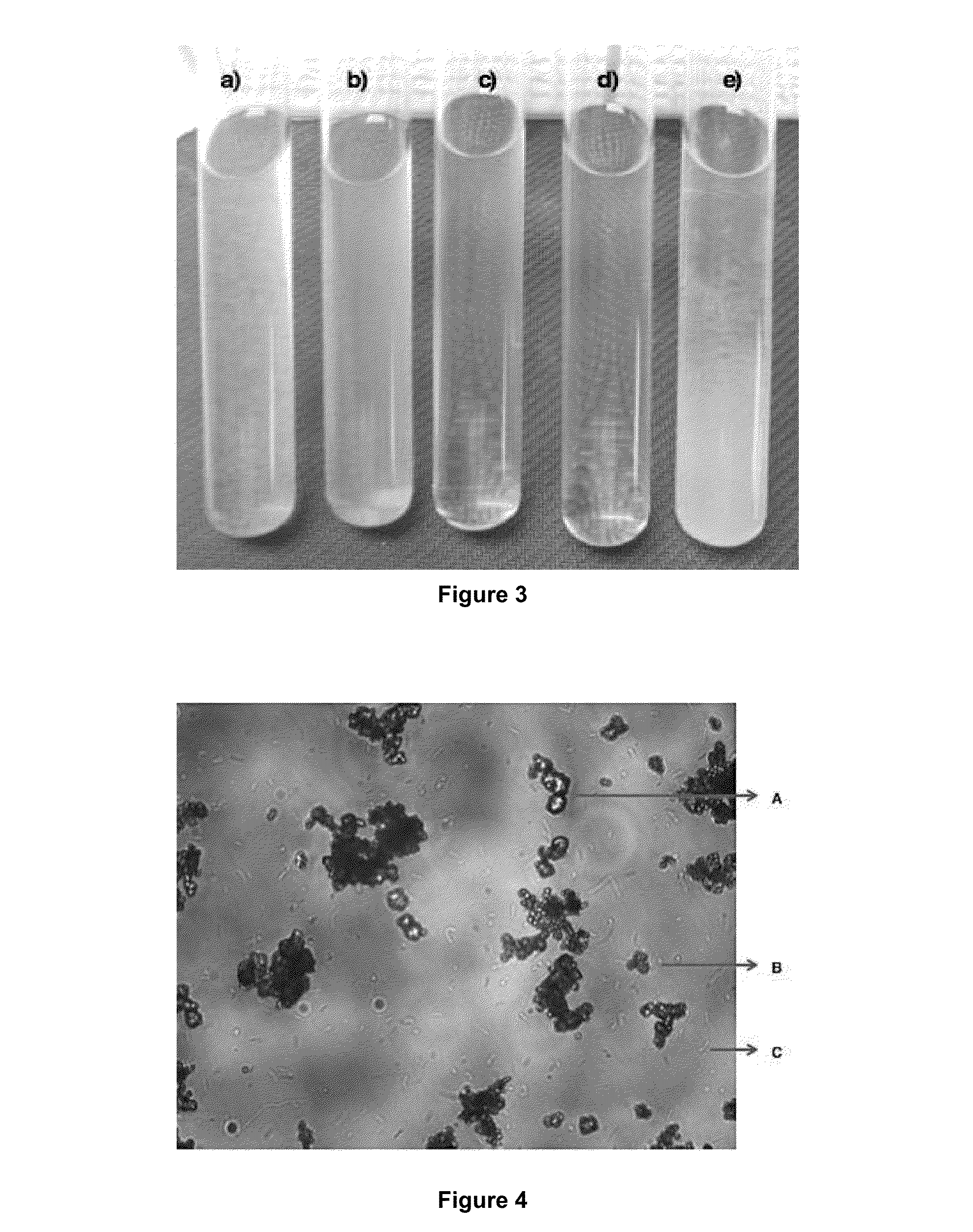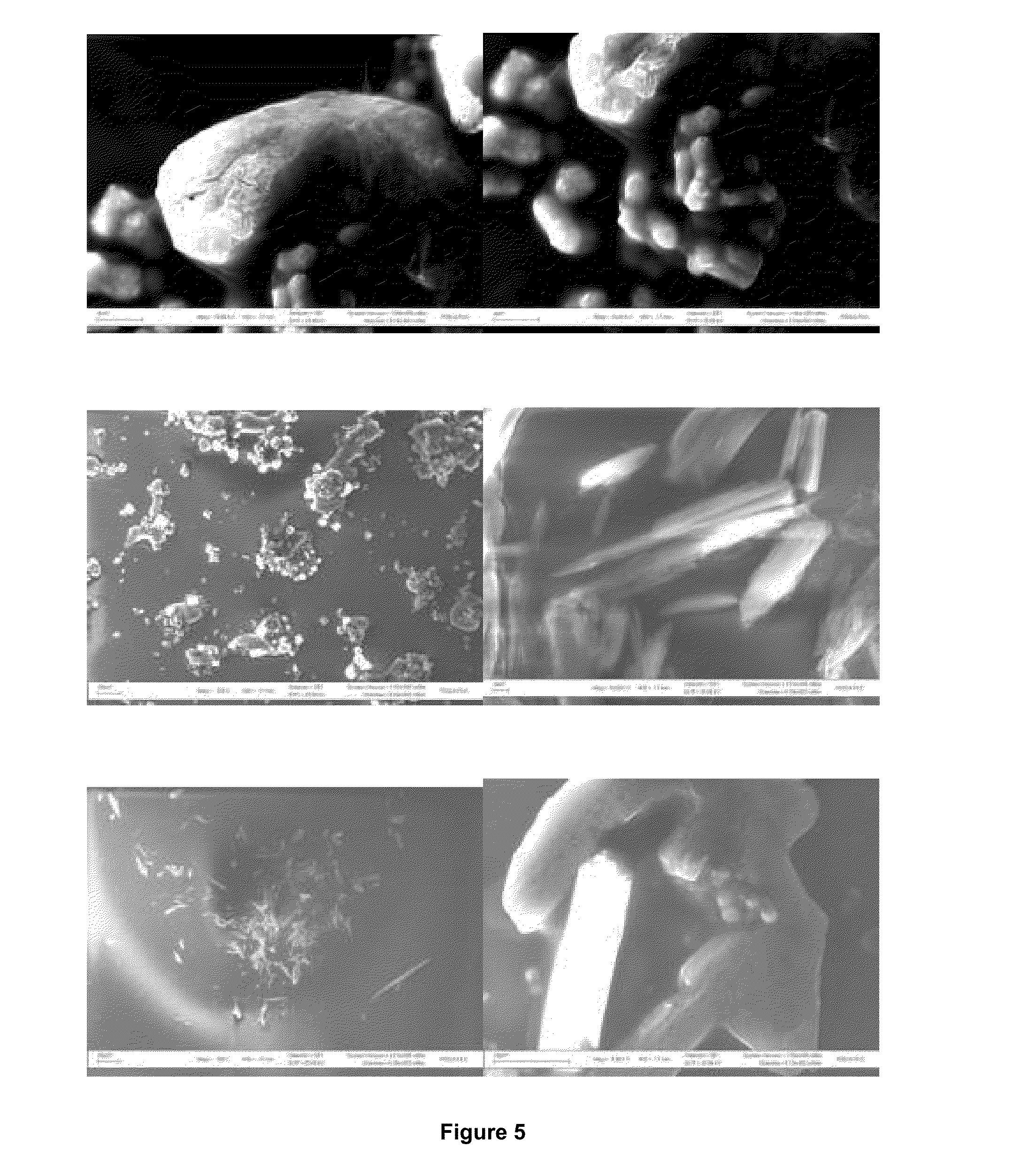Biocementation of particulate material in suspension
- Summary
- Abstract
- Description
- Claims
- Application Information
AI Technical Summary
Benefits of technology
Problems solved by technology
Method used
Image
Examples
example 1
[0054]Settling assays of Bacillus pasteurii bacteria in the presence of EPS producing bacteria.
[0055]These assays demonstrate that in fact cementation occurs together with the application of B. pasteurii bacteria in the particulate material cementation process, after the settling of the particulate material caused by the EPS produced by SLIM bacteria.
[0056]Firstly, both microorganisms (SLIM bacteria and B. pasteurii) are cultured and the efficiency of the SLIM bacteria to settle the suspended particulate material is assayed. The results show that the SLIM bacteria keep the settling properties in the presence of B. pasteurii bacteria, with no significant differences when the SLIM bacteria are cultured alone or in the presence of B. pasteurii. (FIG. 1).
Amount of settled materialBacteria(grams)SLIM9.5B. pasteurii6.2SLIM + B. pasteurii9.8No bacteria5.7No bacteria4.7
[0057]Sedimentation of particulate material in air. FIG. 1 shows the amount of material settled in grams. The assay was car...
example 2
[0062]Experiments with B. pasteurii and SLIM bacteria on particulate material.
[0063]The feasibility of precipitating particulate material through the use of Bacillus pasteurii was assayed. For this aim, we used a DSMZ bacterial strain with code number 33 isolated from soil.
[0064]This freeze dried bacteria were resuspended and cultured in culture medium (Medium B) comprising per each liter: 20 g urea, 5 g casein, 5 g sodium chloride, 2 g yeast extract and 1 g meat extract. pH was adjusted to 7.4 and the culture was kept at 25° C.
[0065]After achieving an optimal bacterial growth, settling assays were carried out testing different culture conditions:[0066]a) Medium B+CaCl2+Salts+Suspended materials[0067]b) Medium B+Salts+Suspended materials[0068]c) Medium B+Salts[0069]d) Medium B[0070]e) Medium B+CaCl2
[0071]2 ml of bacteria of each type, B. pasteurii and SLIM bacteria, with a growth of 108 were added to each 10 ml tube.
[0072]After 4 days, the culture was examined; the results are show...
example 3
[0079]Experiments with Bacillus pasteurii, SLIM bacteria and calcium arsenate.
[0080]The feasibility of precipitating calcium arsenate using B. pasteurii and an initial settling with SLIM bacteria was assayed. For this, diverse assays were carried out using bacteria resuspended and cultured in culture medium (Medium B, described in Example 2). After an optimal culture in suitable culture conditions, the following assays were carried out modifying the culture media (FIG. 6).[0081]A. Medium B+CaCl2+Calcium arsenate[0082]B. Medium B+Calcium arsenate[0083]C. Medium B[0084]D. Medium B+CaCl2
[0085]A. In this assay, the bacteria were grown in a complete medium also containing 0.1 g of CaCl2 and 0.1 g of calcium arsenate. The figure shows a grayish precipitate formed by the bacteria. The three rightmost tubes show the experiment carried out by triplicate; at the left, the figure shows the triplicate experiment with bacteria grown with and without stirring.
[0086]B. In this assay, the bacteria...
PUM
| Property | Measurement | Unit |
|---|---|---|
| volume | aaaaa | aaaaa |
| concentration | aaaaa | aaaaa |
| pressure | aaaaa | aaaaa |
Abstract
Description
Claims
Application Information
 Login to View More
Login to View More - R&D
- Intellectual Property
- Life Sciences
- Materials
- Tech Scout
- Unparalleled Data Quality
- Higher Quality Content
- 60% Fewer Hallucinations
Browse by: Latest US Patents, China's latest patents, Technical Efficacy Thesaurus, Application Domain, Technology Topic, Popular Technical Reports.
© 2025 PatSnap. All rights reserved.Legal|Privacy policy|Modern Slavery Act Transparency Statement|Sitemap|About US| Contact US: help@patsnap.com



